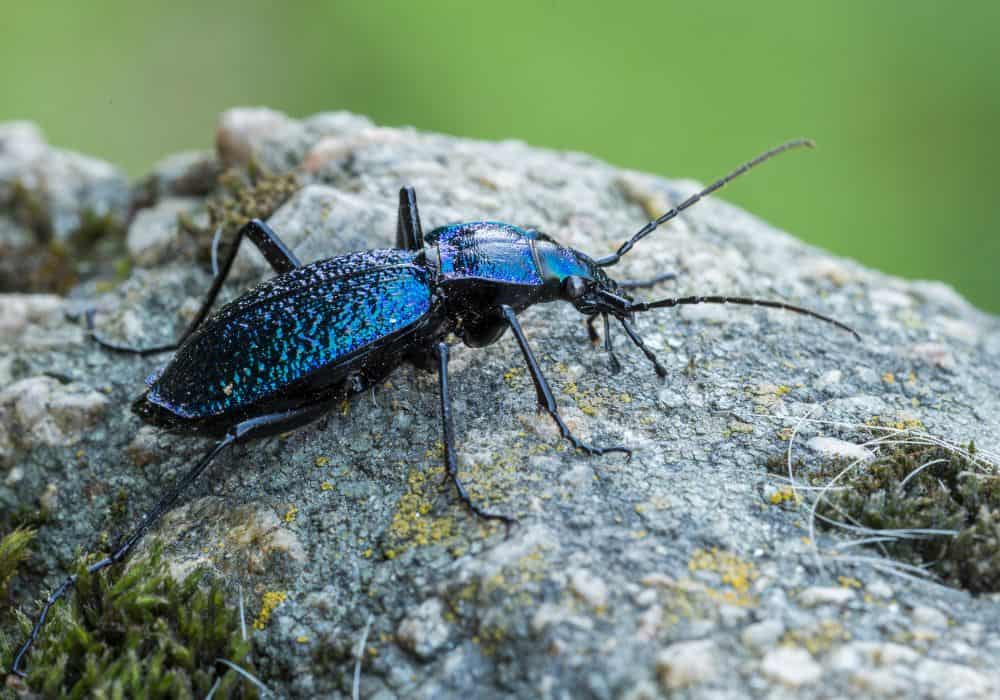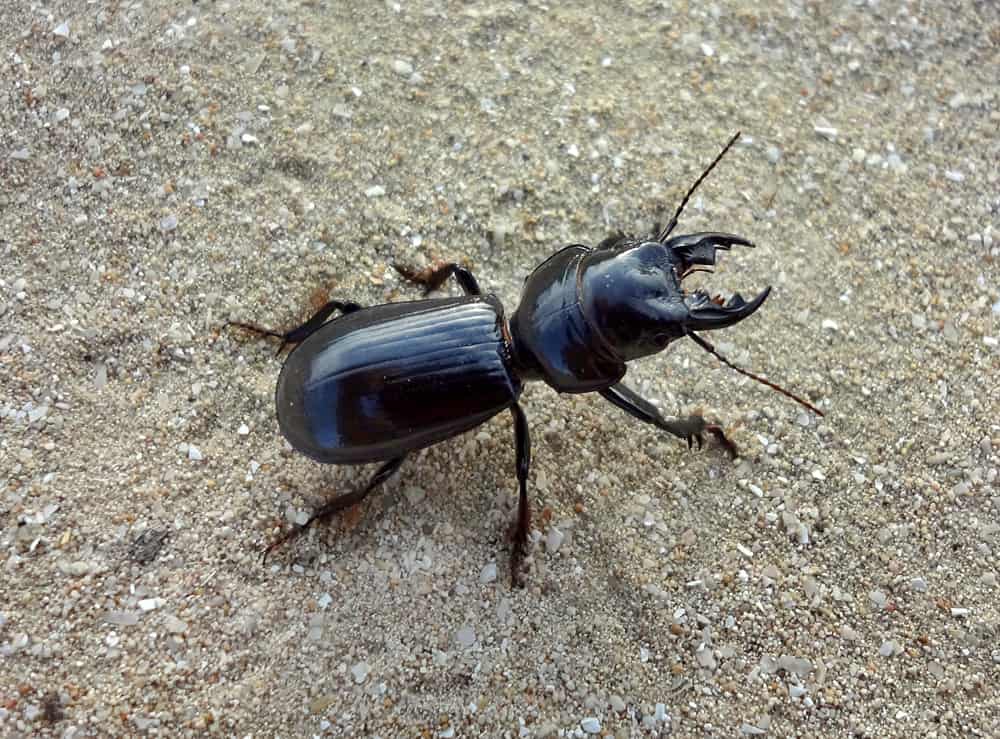Pest infestation is one of the many problems facing different households today, and ground beetles are one of the many bug types known to constitute a nuisance. With Wikipedia stating that there are over 30,000 known species, it is only fitting for you to want to know how to get rid of these ground beetles before it turns into a full-blown infestation in your home.
The simplest way to get rid of ground beetles in your home is to do thorough sanitation. However, you can also consider other options, like introducing predators that prey on ground beetles, setting sticky traps, or adopting pesticides in extreme cases.
In this guide, you will get first-hand information on identifying these ground beetles, the best ways to eliminate them, and preventive measures to avoid dealing with an infestation in the first instance.
How to Identify a Ground Beetle?
Often, brown ground beetles are mistaken for cockroaches; hence, you must familiarize yourself with features that set these bugs apart.
Appearance
Ground beetles have distinct colors that make identifying one easy. Some standard colors these bugs take include dark brown or black. Others include metallic bronze, iridescent green, and even mixed colors.
Depending on the species you are dealing with, they can have a shiny or dull shell, but one constant is that they all have three major body parts. The first part is a small head with antennae, big eyes on both sides, a thorax, and an abdomen.
In addition to the ground beetle’s distinct colors and body segments, you also need to know that the average adult beetle is relatively small and will only range from 1/8 to 1 1⁄2 inches long for the adult and a ¾ inch long for larvae.
You’ll also be able to tell if you are dealing with ground beetles if you notice that they have a flattened look with large jaws and long slender legs.
Behavior and Habits
The behavioral characteristics of a ground beetle and its habits are also quite distinct, making identifying them less strenuous. These bugs exhibit certain peculiarities that aid in identifying them. Let’s look at some of them now.
- Life Cycle
The developmental process of the ground beetle is one to watch for when identifying them. These bugs undergo a complete metamorphosis process where the female beetle lays eggs underground yearly.
This process involves the journey from pupa to full adult beetles that can live for up to one to four years.
Female ground beetles can lay as many as 30 to 600 per season. The entire life cycle of these bugs, from eggs to adulthood, happens in one complete season, often between April and October when they are most active.
- Dietary Behavior
Another good way to identify the ground beetle is through its dietary behavior.
These bugs are predators that often feed on other smaller bugs like caterpillars, maggots, slugs, snails, worms, aphids, or any other insect with a soft body.
However, This feeding habit does not apply to all ground beetle species. Species like the caterpillar hunter will focus on a specific meal type, while others prefer a variety.
More so, some species would instead feed on the pollen of plants, seeds, and shoots than other bugs, but generally, these bugs can eat meals up to four times their total body weight.
- Habitat
As their name suggests, ground beetles live and breed in the soil and are common in moist areas like logs, rocks, boards, and rooms with debris. You will also find some of them under wood chips, pine straws, mulch, and leaves which serve as a breeding site and protective cover from predators.
However, these beetles may move indoors to damp areas like your basement or under flat boards in seasons with extreme temperatures. Such regions serve as a haven and nesting site for the bugs until they return to their natural habitat.
Other times, they move into buildings for hibernation, but when they need to reproduce, they move back out so they can have access to the soil.
4 Major Ways to Get Rid of Ground Beetles

It is always best to find humane ways to eliminate these ground beetles because they benefit the ecosystem. However, full-blown ground beetle infestation cases may require harsher methods to eliminate them. We’ve compiled some surefire ways to get these bugs out of your home for good.
1. Set Aside a Day for Thorough Sanitation
The simplest way to eliminate ground beetles from your space is to clean up and vacuum your surroundings. These beetles need a safe space to hide, and as long as your environment is untidy, there will always be covers available for them to hide.
So, if there are ground beetles in your home, this should tell you that there is debris in your surroundings, and you need to clean your space extensively to get rid of the beetles.
If you live in an environment with tall grasses and leaves, you need to clear the area so there is no hiding space for the bugs.
Furthermore, you must ensure that your lawn is always neat and low so these bugs are not tempted to move indoors and infest your home.
2. Set Sticky Traps
If you are not dealing with a full-blown infestation, eliminating the beetles can be as simple as capturing them in a small jar or setting sticky traps like those used for cockroaches in your home. All you need to do is place these traps in areas these bugs are and wait for them to get caught.
3. Introduce Predators
A natural way to eliminate ground beetles around you is by introducing their predators into your environment. This ground beetles naturally shy away from areas with predators like birds, so it is advisable that you put up birdhouses and feeders to attract birds to your environment.
For your gardens, you can introduce shrews and toads around to help you limit the ground beetles in the area.
4. Apply Pesticides
If you have tried all the simple methods available to help you get rid of the ground beetles around you, and they don’t budge, it may be time to consider applying pesticides. This remedy is unnecessary when dealing with one or two bugs. However, it comes in handy if it is a full-blown infestation.
Remember that these bugs have hard shells, so the basic ready-to-use sprays may not be enough to eliminate them. You may want to consider using professional pest control services to help you manage this situation.
Alternatively, for indoor-based infestations, you can choose to use pesticides that contain pyrethrins or simply use bendiocarb-based insecticides.
For outdoor use, you should get insecticides with chlorpyrifos and pyrethroids.
We also advise using Bifen LP granules to form a perimeter around your surroundings while treating the mulch and soil that helps create a cover that disrupts these bugs navigating your environment.
For maximum effect, use this solution monthly when these bugs are most active, and ensure you apply it every three months to eliminate these bugs.
Ways to Prevent Ground Beetle Infestation
The medical adage that prevention is better than cure applies to situations where you must deal with ground beetle infestations. So, to prevent them from becoming a nuisance, here are a few ways to discourage them from entering your space.
1. Block Potential Entry Points
These bugs require access into your home, so you should seal off all the potential entry points the beetles may pass through. These could include tight spaces like cracks in your walls and window holes.
Ensure you check for gaps under your doors, uncovered vents, and spaces in your entryway to help you limit the risk of these bugs gaining access inside your home.
2. Pick the Right Lighting Option
Naturally, ground beetles are attracted to bright white lights, so it is better to consider yellow lights, especially for your yards and lawns; these will discourage these bugs from coming toward your surroundings.
In addition, limiting the number of lights in your home would be best. If you live in an area that is always lit, keeping these bugs away might be difficult.
3. Clear Your Space
You are likelier to have a ground beetle problem if your space is always clustered and untidy. Because of this, always clear your environment to limit potential hiding spaces for these bugs.
Are Ground Beetles Harmful?
While these bugs might be a nuisance to have around you, they are not harmful to people, nor do they cause structural damage. Below are some significant points to note about these bugs.
- Ground beetles do not cause any structural damages
- Ground beetles do cause harm to people
- These bugs can be a nuisance, especially when found in large numbers
- Female ground beetles do not lay eggs indoors. Instead, they lay their eggs underground.
Final Thoughts
Generally, ground beetles are rarely harmful, especially when the numbers are limited. However, it is understandable when they are in large numbers to find the best ways to eliminate them before they do more harm than good.
It is always best to prevent these bugs from accessing your homes, and the best ways to do so include:
- Block potential entry points
- Pick the right lighting option
- Clear your space
